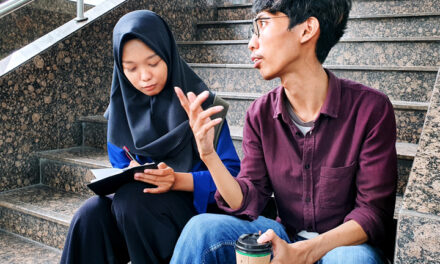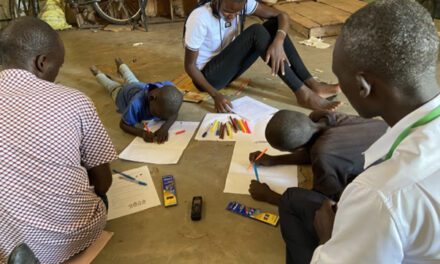This blog was written by Su Corcoran, Helen Pinnock and Rachel Twigg from the Enabling Education Network (EENET). Su and Rachel are also from the Education and Social Research Institute, Manchester Metropolitan University.
School closures in response to COVID-19, and the need for millions of learners to learn at home, raised additional pressures for parents and caregivers who were suddenly responsible for their children’s education, often with limited support or resources. When schools closed, there was a flood of home learning materials and activities circulating online, but too few of these solutions focused on home learning needs of learners with disabilities in low-income contexts, where online learning is rarely an option. The Enabling Education Network (EENET), funded by the Norwegian Association of Disabled aimed to develop guidance and resources for all learners, focused on encouraging appropriate, achievable, and low stress learning activities in easy-to-read and visual printed and online formats.
To inform the design of the home learning materials we wanted to understand how children’s learning was already being supported at home during school closures and what the biggest barriers were to children learning at home. We conducted two surveys. A telephone survey in Zambia and Zanzibar reached 97 parents who did not have access to the Internet. 1000+ respondents from 27 countries completed an online survey in 10 languages. Here, we explore the major challenges identified by the respondents who described themselves as parents, teachers, NGO staff, education consultants, and officials in government authorities and ministries of education.
The main concerns for respondents were the extra risks faced by children already living in poverty. As informal income-generating opportunities decreased with the closure of non-essential businesses, families struggled to pay for food and the numbers of children on the streets increased. Prioritising education provision by radio, television and online platforms aimed to ensure countrywide coverage, but inevitably meant a lack of access for those without radio, television or internet access. Uncertainty surrounding the expectations on parents and guardians in terms of their children’s learning, where to find useful guidance on adapting home learning materials, or potential dates for school reopening, caused a lot of stress for caregivers who were rarely provided with mental health support during the crisis.
Children with disabilities were often totally invisible. Television lessons for example, did not use sign language. Some mainstream schools stopped providing rehabilitation, additional learning support, and even access to medication in some contexts.
Despite the challenges, there were a number of successful experiences: Television and radio lessons reached a large number of children in some places, such as Kenya and Eswatina, and in some countries hard copy materials were distributed, which were well received by parents and students without access to television, radio and internet.
WhatsApp was well used by those with mobile phones and data/wifi access. Teachers made short videos via this platform, sending lesson plans and regularly contacting children. Parents shared resources in locally set up peer-support groups. In Syria, night schools made the most of available electricity. In Jakarta, families received a stipend through schools to pay for internet access and learners with educational health care plans in England could still go to school and access support disability centres.
Our findings suggest that if you want good home learning for all learners when schools are closed, you need safe healthy literate homes where families can engage with local support networks to share resources and care for each other’s children. Electricity and access to the internet is key, as is access to reading materials if this is not possible, as well as inputs from educators to provide home learning lessons that fit into existing frameworks. And if these are not already there, work is needed to repair the framework.
Home learning support should be designed to build on and build up the key conditions for supporting children’s learning at home. We have drawn five key recommendations from the survey:
- When schools re-open, prioritise recovery from widened equity gaps through catch-up education, nutrition, health and disability rehabilitation.
- Education via television/radio/internet isn’t reaching enough children. Give schools and other local agencies autonomy and resources to distribute interim hard copy materials, through their networks.
- Electricity and internet access for schools and neighbourhoods should be a priority in national human resource development strategies (education sector plans and donor support programmes).
- Learning resources should fit the patterns of lives in crisis. Integrate learning activities into daily routines. Aim content and formats at average community literacy levels (technology, reading and numeracy). Give guidance on setting up learning routines; provide adaptations for children with disabilities and special educational needs.
- Support young people’s and parents’ mental health while distributing educational content. Keep parents up to date on existing plans and possible changes.
More information and project reports can be found on the EENET website: https://www.eenet.org.uk/inclusive-home-learning/





